Abstract
AT-2266 [1-ethyl-6-fluoro-1,4-dihydro-4-oxo-7-(1-piperazinyl)-1,8-naphthyridine-3-carbo xylic acid] showed a broad spectrum of antibacterial activity against gram-positive and gram-negative microorganisms, including Pseudomonas aeruginosa. The in vitro antibacterial activity of AT-2266 was in general comparable to that of norfloxacin, but much higher than that of pipemidic or nalidixic acid. The 90% minimal inhibitory concentrations (MIC90s) of AT-2266 for P. aeruginosa resistant to gentamicin (MIC range, 25 to greater than 200 microgram/ml) and Enterobacteriaceae resistant to nalidixic acid (25 to greater than 1,600 micrograms/ml) were 3.13 and 12.5 micrograms/ml, respectively. The to nalidixic acid (25 to 1,600 micrograms/ml) were 3.13 and 12.5 micrograms/ml, respectively. The MICs of AT-2266 were only slightly affected by the addition of horse serum or sodium cholate, by the pH of the medium, and by inoculum size. AT-2266 was sodium cholate, by the pH of the medium, and by inoculum size. AT-2266 was bactericidal at concentrations near its MIC value. The 50% effective doses of AT-2266 after oral administration against systemic infections in mice were about 1/2 those of norfloxacin, about 1/10 those of pipemidic acid, and between 1/20 and 1/40 those of nalidixic acid.
Full text
PDF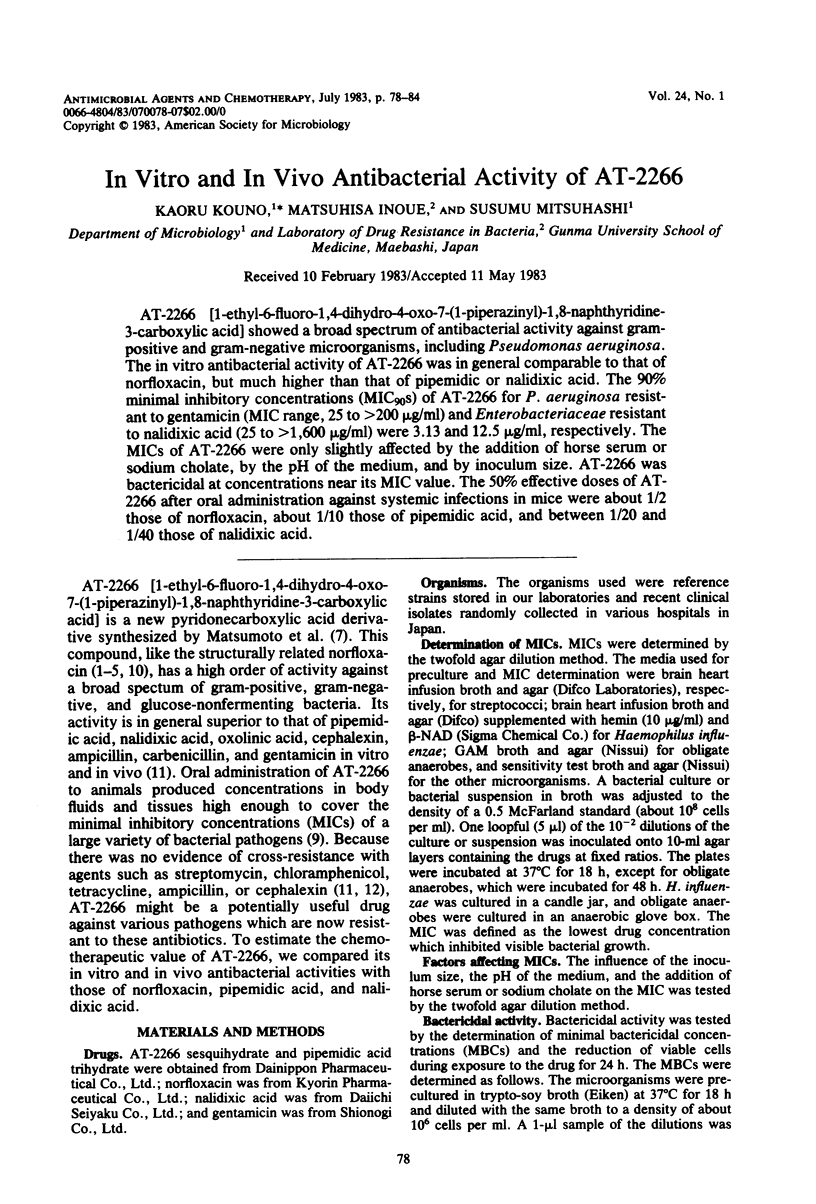
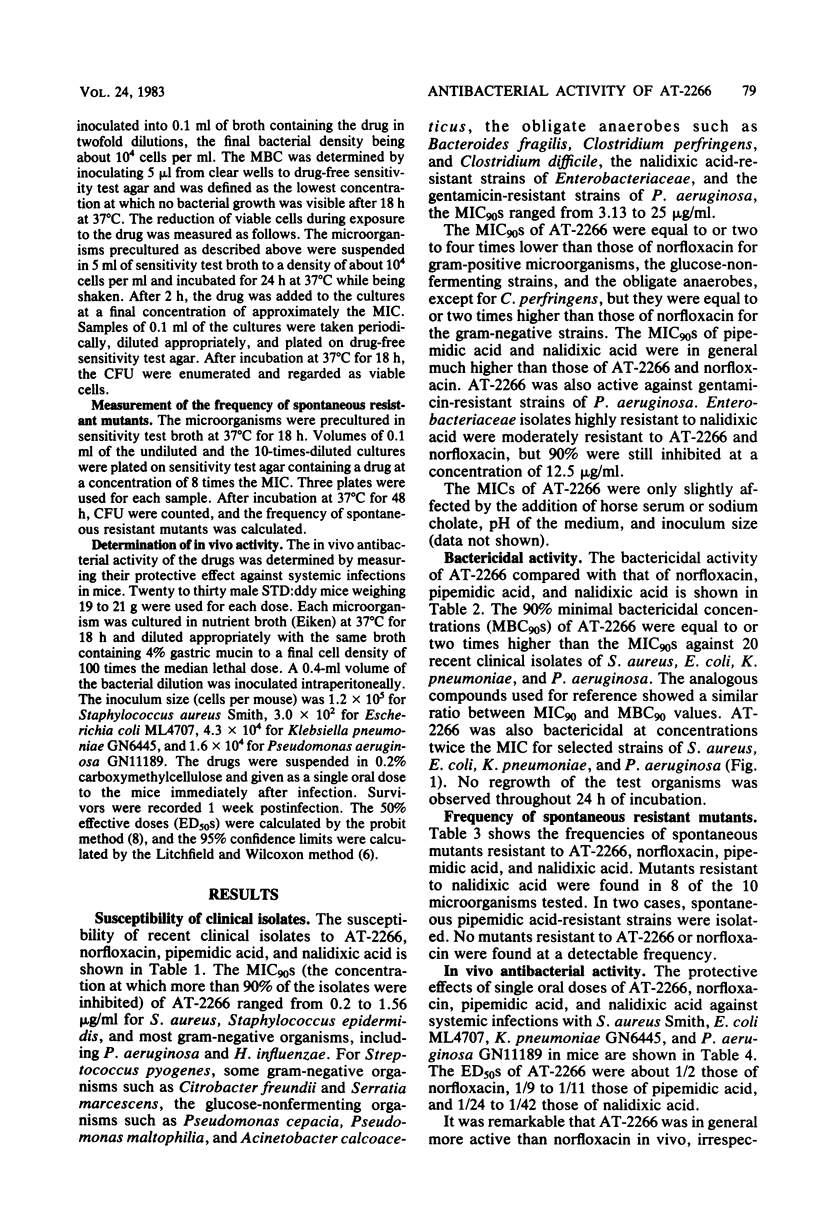
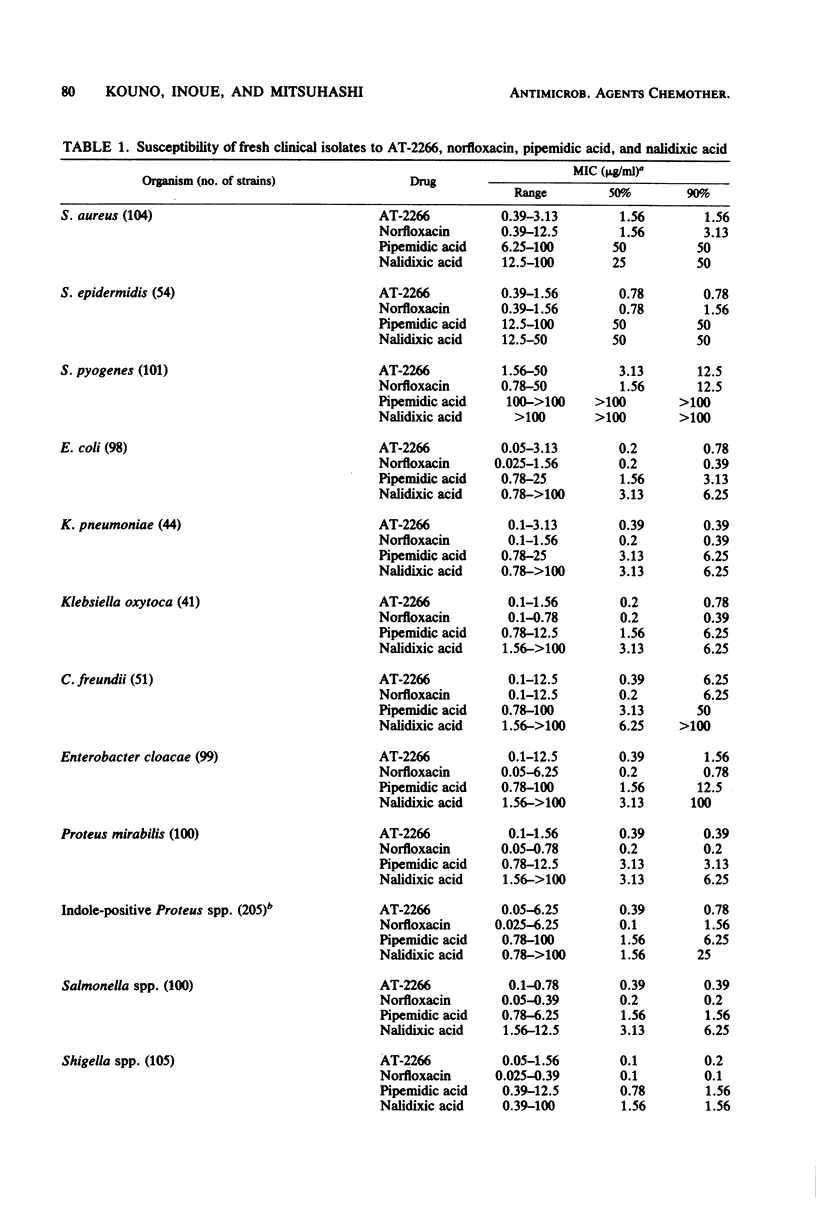
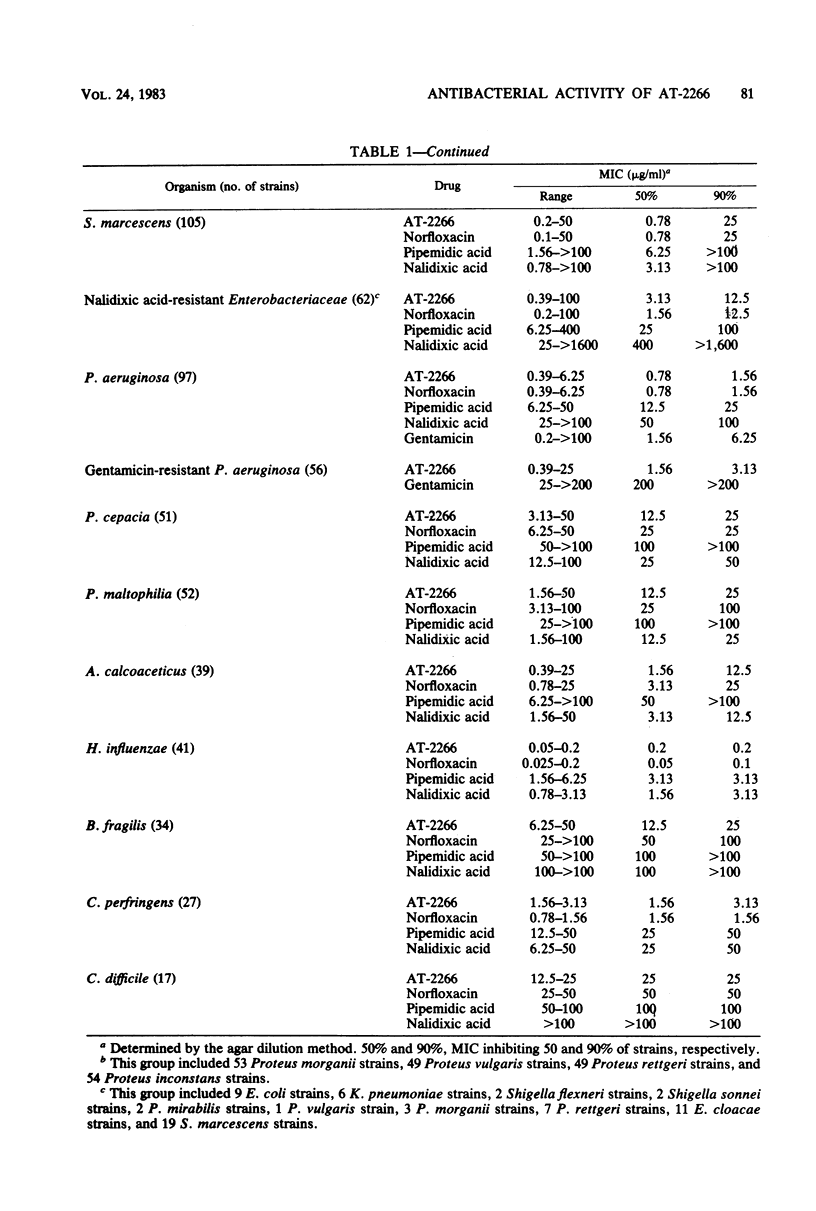
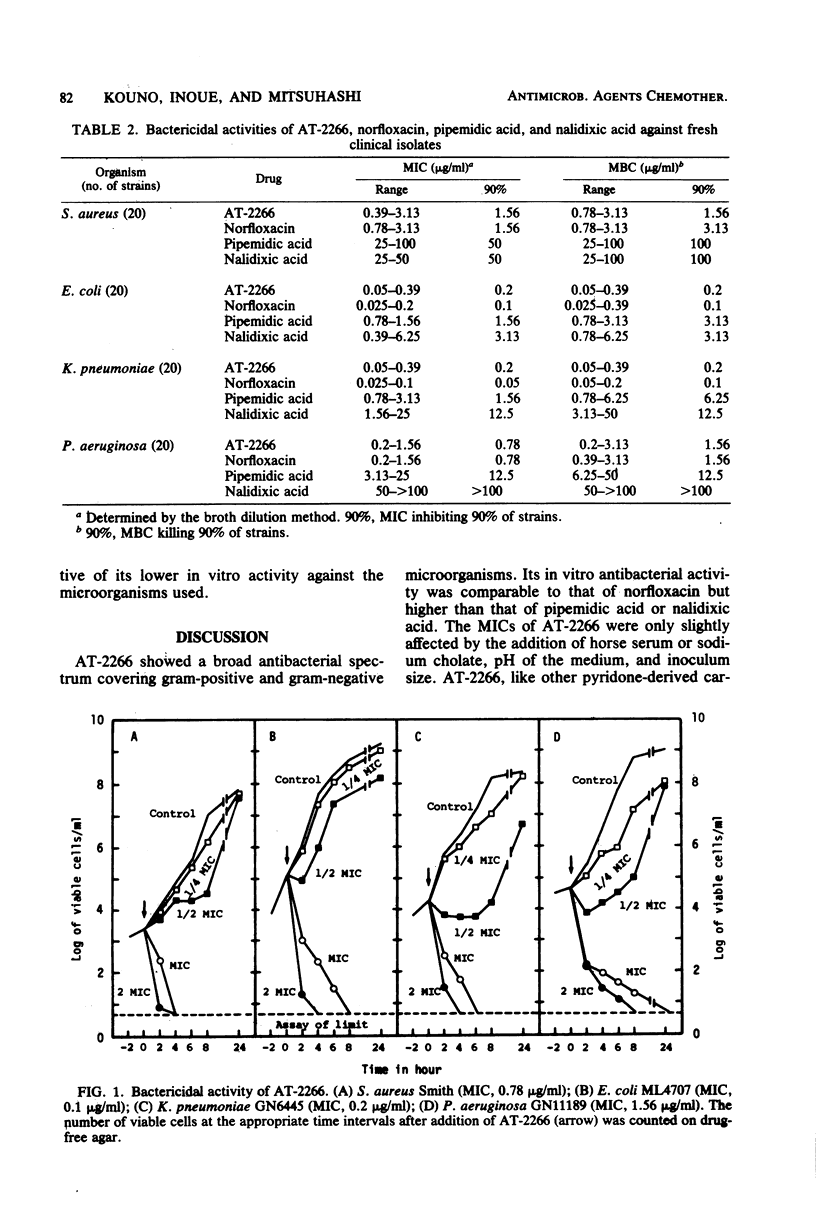
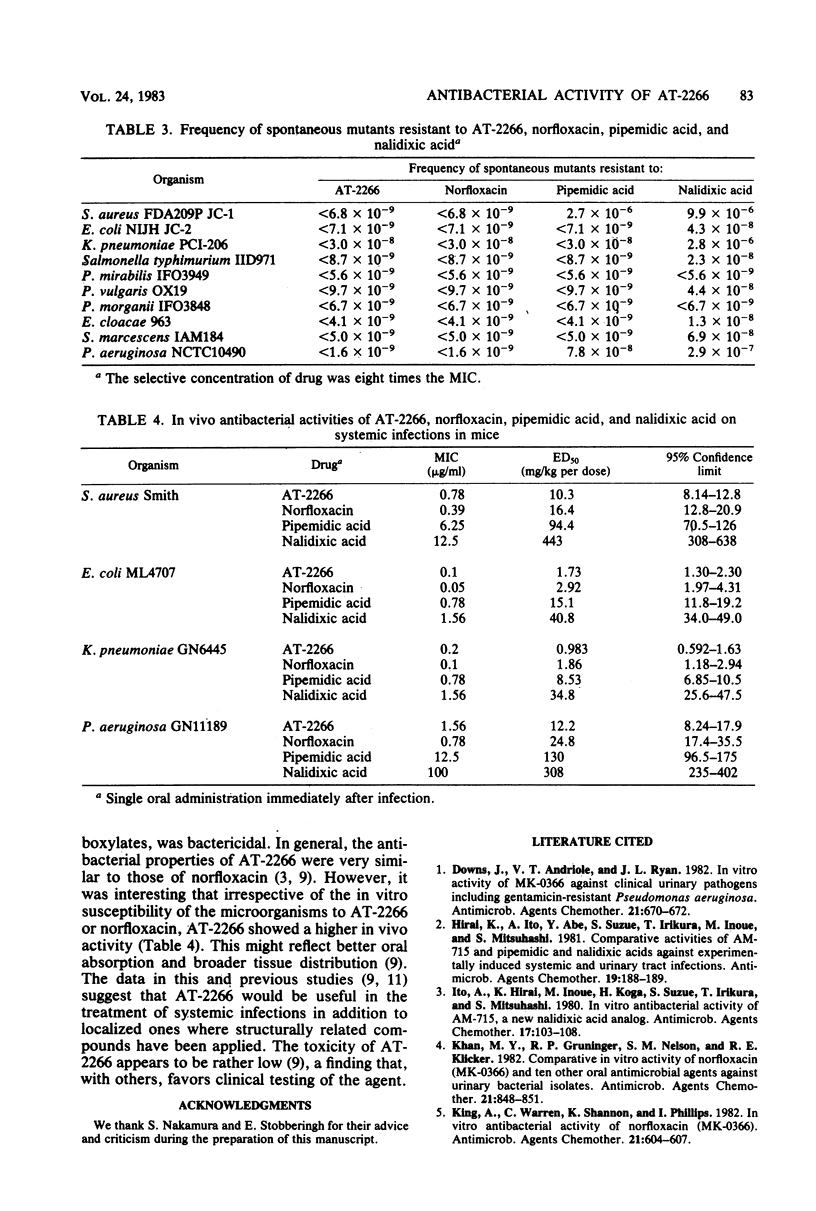
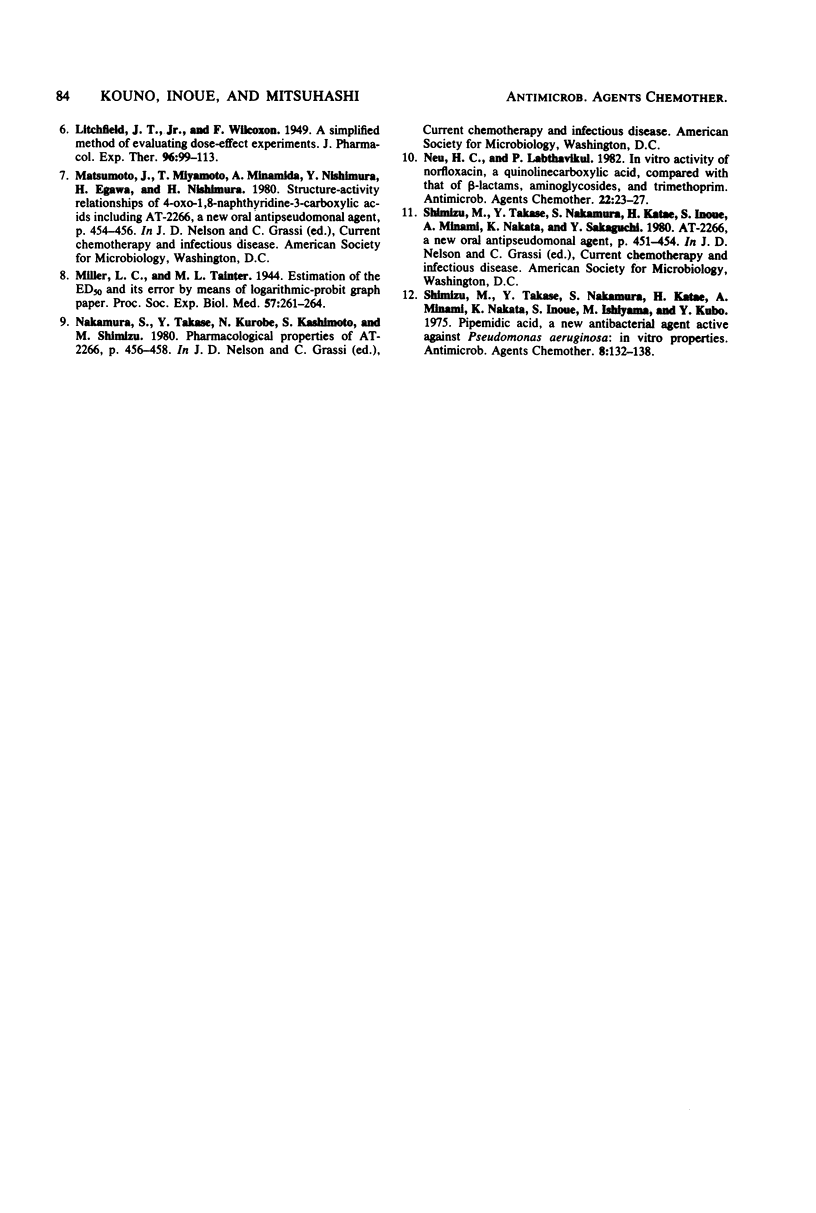
Selected References
These references are in PubMed. This may not be the complete list of references from this article.
- Downs J., Andriole V. T., Ryan J. L. In vitro activity of MK-0366 against clinical urinary pathogens including gentamicin-resistant Pseudomonas aeruginosa. Antimicrob Agents Chemother. 1982 Apr;21(4):670–672. doi: 10.1128/aac.21.4.670. [DOI] [PMC free article] [PubMed] [Google Scholar]
- Hirai K., Ito A., Abe Y., Suzue S., Irikura T., Inoue M., Mitsuhashi S. Comparative activities of AM-715 and pipemidic and nalidixic acids against experimentally induced systemic and urinary tract infections. Antimicrob Agents Chemother. 1981 Jan;19(1):188–189. doi: 10.1128/aac.19.1.188. [DOI] [PMC free article] [PubMed] [Google Scholar]
- Ito A., Hirai K., Inoue M., Koga H., Suzue S., Irikura T., Mitsuhashi S. In vitro antibacterial activity of AM-715, a new nalidixic acid analog. Antimicrob Agents Chemother. 1980 Feb;17(2):103–108. doi: 10.1128/aac.17.2.103. [DOI] [PMC free article] [PubMed] [Google Scholar]
- Khan M. Y., Gruninger R. P., Nelson S. M., Klicker R. E. Comparative in vitro activity of norfloxacin (MK-0366) and ten other oral antimicrobial agents against urinary bacterial isolates. Antimicrob Agents Chemother. 1982 May;21(5):848–851. doi: 10.1128/aac.21.5.848. [DOI] [PMC free article] [PubMed] [Google Scholar]
- King A., Warren C., Shannon K., Phillips I. In vitro antibacterial activity of norfloxacin (MK-0366). Antimicrob Agents Chemother. 1982 Apr;21(4):604–607. doi: 10.1128/aac.21.4.604. [DOI] [PMC free article] [PubMed] [Google Scholar]
- Neu H. C., Labthavikul P. In vitro activity of norfloxacin, a quinolinecarboxylic acid, compared with that of beta-lactams, aminoglycosides, and trimethoprim. Antimicrob Agents Chemother. 1982 Jul;22(1):23–27. doi: 10.1128/aac.22.1.23. [DOI] [PMC free article] [PubMed] [Google Scholar]
- Shimizu M., Takase Y., Nakamura S., Katae H., Minami A. Pipemidic acid, a new antibacterial agent active against Pseudomonas aeruginosa: in vitro properties. Antimicrob Agents Chemother. 1975 Aug;8(2):132–138. doi: 10.1128/aac.8.2.132. [DOI] [PMC free article] [PubMed] [Google Scholar]


